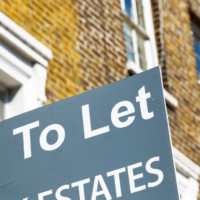
According to Hamptons, around half of all buy-to-let property purchases are now completed using a limited company.
Operating a buy to let was the second most popular reason for forming a limited company in 2020, the 41,700 total being just behind the 43,200 firms created for online and mail ordering.
Hamptons, which analysed the data, said this took the number of BTL limited companies to 228,743 and illustrated the impact of the tax changes in 2016.
The number has more than doubled since 2016 when tax changes for landlords were introduced, rising by 128 per cent
“Between the beginning of 2016 and the end of 2020, more companies were set up to hold buy-to-let properties than in the preceding 50 years combined,” Hamptons said.
“In 2016, a three per cent stamp duty surcharge came into force and the proportion of mortgage interest deductible from tax on buy to lets held in personal names began to be phased out.
“As a result, investors have changed the way in which they purchase properties, with increasing numbers shifting towards limited companies to reap further tax benefits.”
North-South divide
Southern-based landlords were most likely to incorporate.
A third of all BTL companies set up in 2020 were in London and when adding the South East this accounted for almost half of all incorporations.
Hamptons noted the benefits of incorporating in these areas were likely to be bigger due to the greater propensity to be mortgaged and a higher mortgage interest bill.
The tax benefits of holding property in a company derive from the ability of landlords to offset 100 per cent of mortgage interest against profits, while those holding a property in their own name can offset just 20 per cent.
Rental Growth
The rate of rental growth accelerated sharply in December to reach its fastest rate of increase since July 2016.
Over the last three months, annual rental growth rose from 1.4 per cent in October to 3.0 per cent in November and to 4.1 per cent in December.
Once again, all nine regions in England saw rents rise during December, with rental growth also turning positive in Wales.
Rents in London began to rise in November for the first time since the start of the pandemic, following eight months of falls with a further jump to 1.6 per cent in December.
However, rents in inner London remain well down on last year, falling 11.5 per cent between December 2019 and December 2020 – a slight recovery from the 12.7 per cent year-on-year fall recorded in November.
Half of all BTLs bought in limited companies
Aneisha Beveridge, head of research at Hamptons, said: “We estimate that around half of all rental properties bought today are being put into a company, up from close to one-in-five during 2016.”
“While most of this growth has been driven by larger landlords, smaller landlords, particularly those who are higher rate taxpayers, have also reaped the tax saving benefits from incorporating.”
She added that with more high street lenders entering the limited company space in recent years, competition has driven down interest rates to within a percentage point of similar products designed for landlords purchasing in their own name.
As prospective tenant numbers rose above 2019 levels while the number of rental homes on the market fell by double-digit percentages everywhere outside London, this had driven rental growth up significantly.












